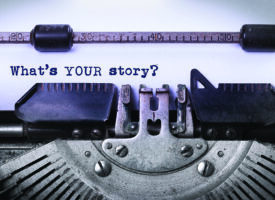 The reader comes to you as a complete stranger. From the moment he reads your introduction, he gladly abandons all conscious hold on his common everyday life. He is willing to put himself into the heart and soul of your hero, to think that he is this hero who will fight, struggle and triumph. The purpose of point of view is to arouse the reader’s belief that he is seeing and experiencing, first hand, startling and revealing incidents and events.
The reader comes to you as a complete stranger. From the moment he reads your introduction, he gladly abandons all conscious hold on his common everyday life. He is willing to put himself into the heart and soul of your hero, to think that he is this hero who will fight, struggle and triumph. The purpose of point of view is to arouse the reader’s belief that he is seeing and experiencing, first hand, startling and revealing incidents and events.
What is Point of View?
Point of view is telling a story from a pre-determined vantage point. It is an essential formula for writing stories. If we were to exclude point of view from our stories, every story would be hopelessly confused, an entanglement of incoherent scenes. Think of a large mall full of shops. Everyone is walking and talking at the same time. The story without a point of view resembles a mall full of shoppers, all talking at the same time. Without a clear focus on the unfolding events, the story would lack suspense and excitement because a multitude of
Point of view is telling a story from a pre-determined vantage point. It is an essential formula for writing stories. If we were to exclude point of view from our stories, every story would be hopelessly confused, an entanglement of incoherent scenes. Think of a large mall full of shops. Everyone is walking and talking at the same time. The story without a point of view resembles a mall full of shoppers, all talking at the same time. Without a clear focus on the unfolding events, the story would lack suspense and excitement because a multitude of
point of views would reveal everything at one time.
The device for telling a story is divided into three methods:
1) The point of view of the main participant (hero or heroine);
2) the omniscient point of view; and
2) the objective, impartial or third-person point of view.
All stories told in the first person usually have the point of view of one of the main character, preferably the hero or heroine. Examples of stories told in this point of view are “Robinson Crusoe,” a number of Poe’s short stories, such as the “Black Cat” and “Ligeia” and “The Sun Also Rises” by Ernest Hemingway.
Telling a story in first person is extremely effective because using the personal pronoun (“I“) conveys the inevitable tone of sincerity. We seem to read the personal experiences of a character who is capturing his life as it unfolds before his eyes.
This method also has its faults. Let’s suppose you create an adventure story in first person and you have the hero defeat all obstacles and achieve all goals easily, then your story is apt to carry the impression of egotism.
Stories in which action transpires between widely separated scenes (such as past, present and future points of view) forces the hero to cover the great distance and participate in all the action. The character must be present or he cannot tell what occurs from his point of view. Writers avoid these difficulties by using flashbacks, dreams, letters, and dialogue.



